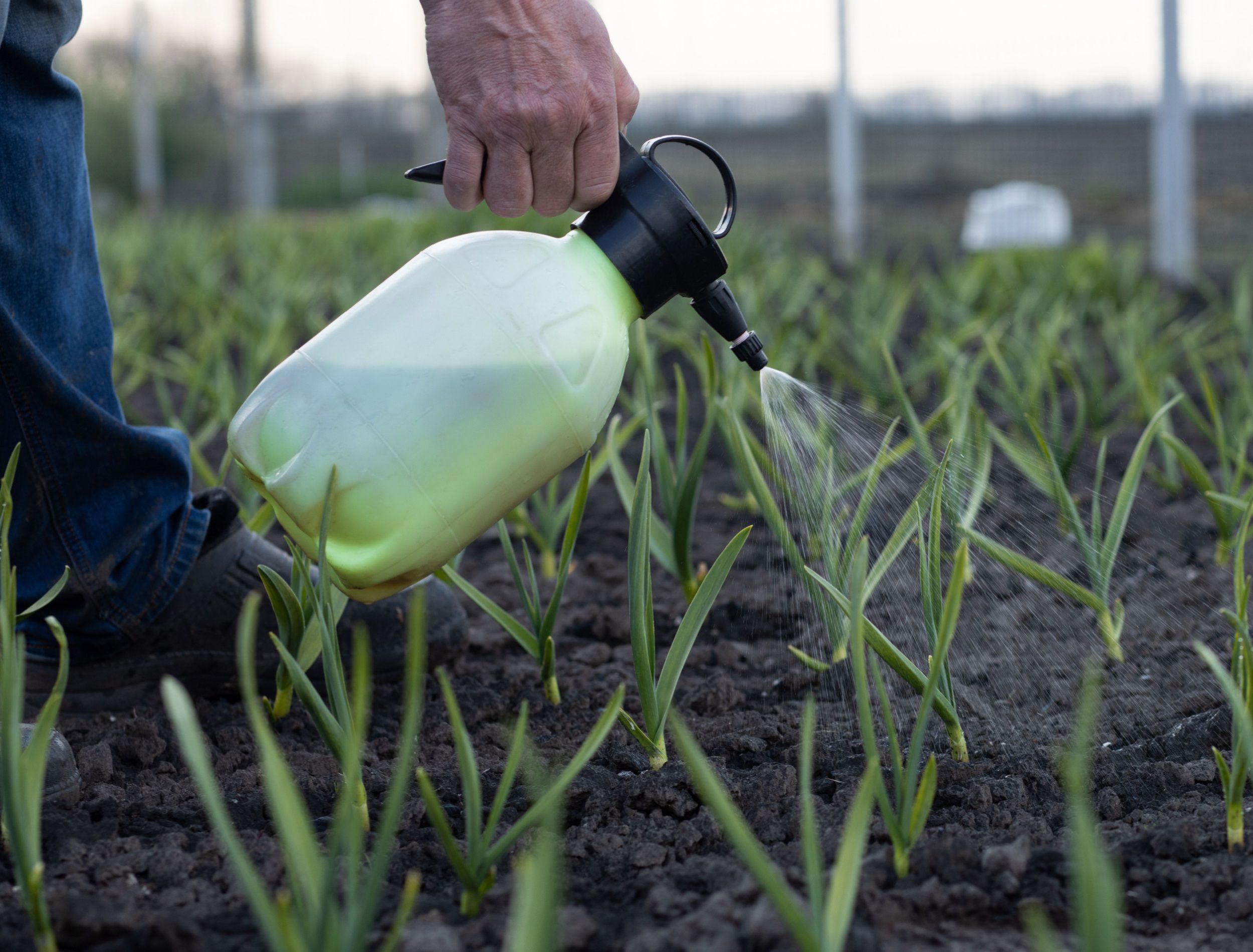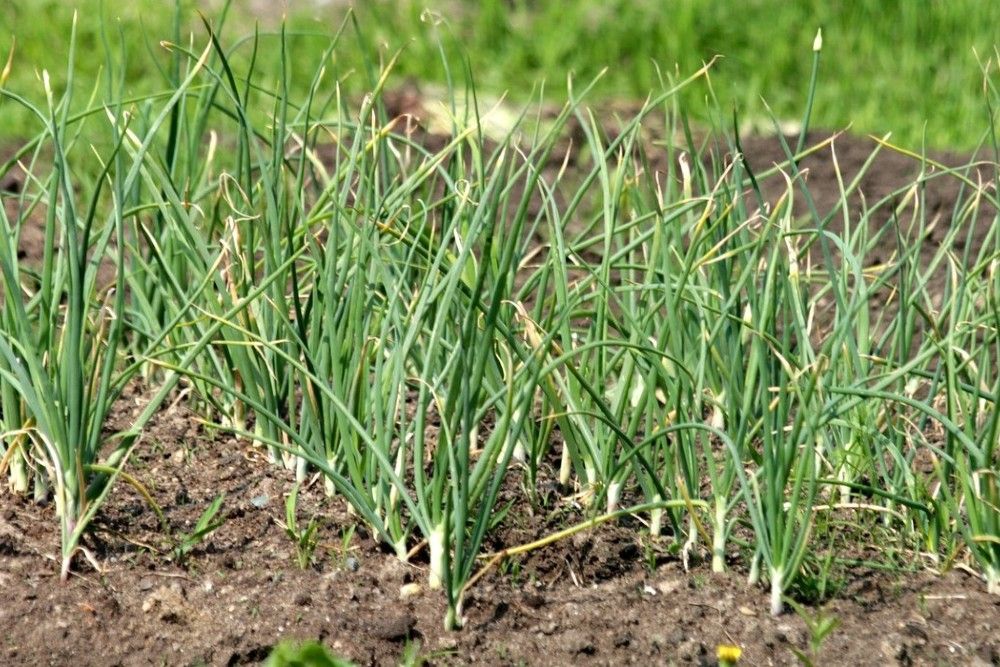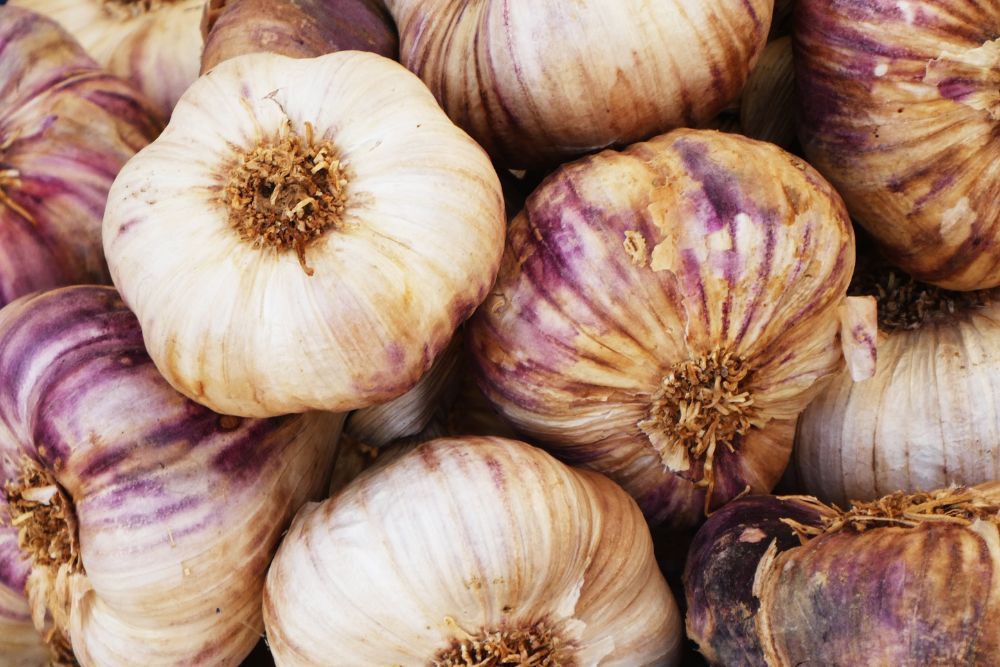Growing garlic is an exciting and rewarding experience -- and it helps with the grocery bills -- but it requires special care to get the best results. One important task in the upkeep of a garlic patch is fertilization. When done right, providing your garlic plants with necessary nutrients has a major impact on their growth and development.
Knowing exactly when to fertilize your garlic plants is key -- too late or too early, and you're likely to see diminished yields as a result. Discover the timing for fertilizer application, and how to fertilize, so that you give your garlic plants everything they need for maximum success!
When to Fertilize
Image credits: supersaiyan3 via Shutterstock
Knowing when to fertilize your garlic plants helps you maximize their yield and ensures that they remain healthy and productive throughout the growing season.
Before Planting
Fertilizing your garlic before planting, in the fall, helps ensure you get the best results from your plants. Use 2 tablespoons of a complete fertilizer with a ratio of 5-10-10 or organic options such as bone or fish meal.
To apply, work the fertilizer into the soil 6 inches inches below the garlic. Doing so helps to create an optimal environment for vigorous root growth and overall plant health during their growing period.
Early-Spring
Fertilizing garlic plants in the early spring helps them to develop a strong, healthy root system and maximize their growth potential. Use organic fertilizers such as blood meal, synthetic nitrogen fertilizer, or pelleted chicken manure. It is best to side dress or broadcast the fertilizer around the plants, rather than directly apply it to their foliage.
Mid-May
By mid-May, the garlic has already used up all of its energy reserves stored in the bulb and will soon start putting out new leaves and shoots for further development. A light fertilizer application helps provide additional nutrients for the plants -- nitrogen, phosphorous, and potassium -- which are essential for healthy growth.
When shoots first emerge, top dress immediately and then again two to three weeks afterwards.
When applying fertilizer, select one that is lower in nitrogen and higher in phosphorus and potassium. High amounts of nitrogen can delay bulbing, so avoid applying it after the first week of May. If you incorporated enough compost into your soil when preparing beds in the fall, you may not need additional fertilizing in the spring.
Tips on How to Fertilize Your Garlic Plants
Image credit: zoosnow via Pixabay
Once you've determined when it's best to fertilize your garlic plants, there are some simple steps you to take in order to ensure that they get the necessary nutrients they need. Here are some tips on how to fertilize your garlic plants.
Preparation
Before you apply fertilizer, read, and follow the instructions on the package carefully. Depending on the type of fertilizer you are using, it may require dilution with water or be ready-to-use as-is. If possible, choose an organic fertilizer to minimize potential environmental damage from chemical runoff.
Once you've familiarized yourself with the product's usage guidelines, gather the tools or materials needed for application. This may include a watering can, large spoon, or garden hose. If you're using a pre-mixed fertilizer, make sure it is in an easily pourable container and plan to apply the mixture immediately after mixing.
Water Well
Fertilizing your garlic plants is a key part of caring for them. To start, grab a hose or watering can and fill it up with fresh water at room temperature. Next, adjust the nozzle on your hose or sprinkle setting on your watering can to create a gentle showering effect rather than an intense stream of water that could cause soil erosion or runoff.
Move the hose or watering can in a circular motion around each plant, ensuring that the entire area is well-watered. Check for dry patches of soil and moisten them as needed. You want to ensure that the roots are getting enough water, so they grow strong and healthy.
When you finish, check the topsoil for moisture by pressing down with your hand or a finger. If it feels dry an inch below the surface, give the garlic one more light sprinkling of water to ensure they're getting enough hydration, even if there is a period of drought later on.
Three to four weeks before harvesting your garlic, start reducing the amount of water you provide. Cut down on watering by half and water a little less often. Two weeks prior to harvesting, stop watering altogether. Avoid overwater as this leads to diseases like root rot or bloat.
Importance of Fertilizing Your Garlic
Image credits: Nick Fewings via Unsplash
Fertilizing your garlic is an important part of ensuring a bountiful harvest. Garlic is a heavy feeder and has a high demand for nitrogen. Nitrogen plays an essential role in its growth and development. By fertilizing with the right fertilizer, you optimize the amount of nutrients that are available to your garlic plants and ensure they have what they need to thrive and produce large, flavorful bulbs.
Give Your Garlic Plants a Fertilizer High-Five
Fertilizing garlic plants is crucial to achieving a good harvest. Using organic fertilizers is ideal as they are more efficient and promote healthy soil. Follow the instructions on the label and apply the fertilizer at the right times according to the plant's growth stage. Doing so ensures that both your garlic bulbs and soil benefit from the extra nutrients.
Lastly, don't forget to share your experience with friends and family. And leave a comment below if you need some further guidance with fertilization or have suggestions for alternative methods!




